Harmony is a fundamental aspect of music that involves the combination of musical notes played simultaneously, creating a rich and complex sound.
It’s a powerful tool that can evoke emotions, create tension, and add depth to your compositions.
Today, we’ll be breaking down the many aspects of harmony, including:
- The Foundations of Harmony and its Role in Music ✓
- The Science Behind Consonance and Dissonance ✓
- Different Types of Harmonies & How to Use Them Effectively ✓
- The Art of Chord Building and Progressions ✓
- Harmony as an Expressive Tool in Music Production ✓
- Expert Tips on Layering, Voicing, Mixing, and More! ✓
In essence, harmony is the glue that binds melody and rhythm together, forming a complete musical structure.
So, without further ado, let’s dive in…
Table of Contents
Defining Harmony & Its Counterparts
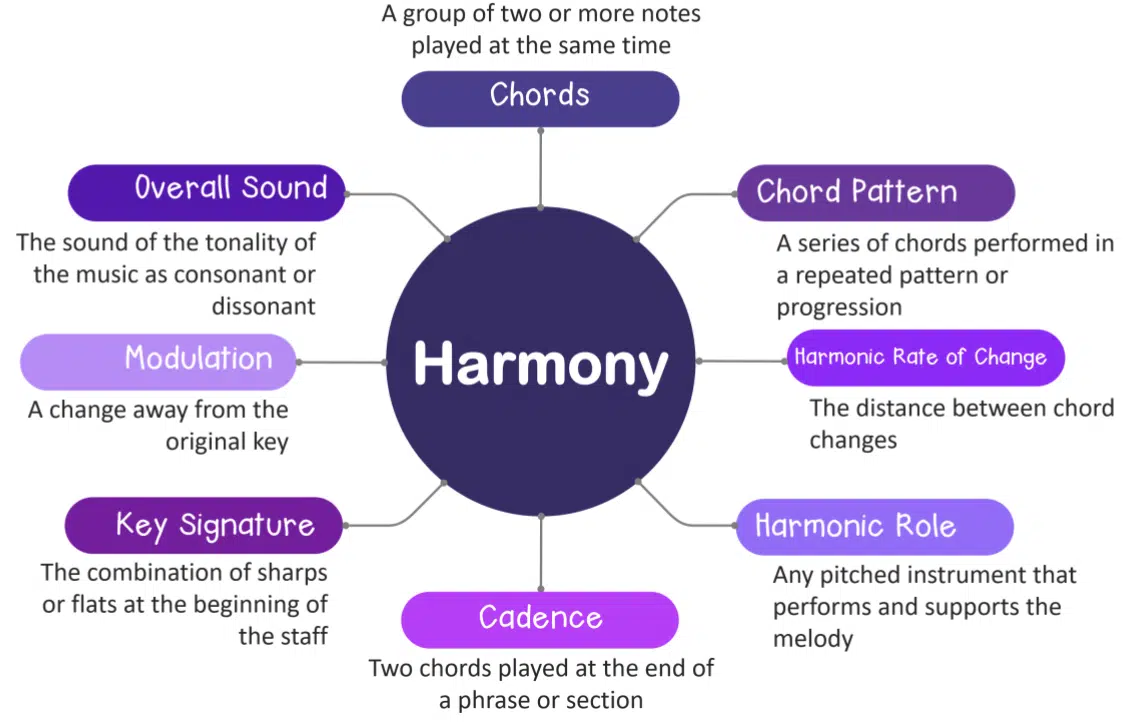
Before we dive into the specifics, let’s first define what harmony is and how it relates to other elements of music.
The word “harmony” has its roots in the Latin “Harmonia,” which means agreement or concord.
The Greeks also had a similar word, “Harmonia,” which referred to the agreement between characters or elements.
In the context of music, harmony refers to the agreement between musical notes that are played simultaneously.
Melody & Chords

Melody is the horizontal aspect of music, consisting of a series of musical notes played one after another.
Harmony on the other hand, is the vertical aspect, involving the combination of notes played at the same time.
Chords, on the other hand, are a specific type of harmony formed by a group of musical notes, typically three or more, played simultaneously.
If you want to learn how to write a melody that will impress anyone who hears it, look no further.
Musical Notes

A musical note is a single pitch or tone, represented by a symbol on a musical staff.
Musical notes are the basic building blocks of music and serve as the foundation for creating melodies, harmonies, and chords.
In music, synonyms and characters refer to the different ways that harmony can be described or represented.
These include terms such as consonance, dissonance, and counterpoint.
As well as the specific notes and intervals that make up a chord or harmony.
Harmony: Breaking It Down
Now that we have a basic understanding of what harmony is, let’s explore its foundations and all the different types of harmonies we can create.
There are several types of harmonies that can be created by combining musical notes.
Understanding these different types can help you create more interesting and diverse music.
-
Consonant & Dissonant

Consonant harmonies are combinations of notes that sound pleasing and stable.
Dissonant harmonies create tension and unrest.
This balance between consonance and dissonance is a key aspect of creating engaging and dynamic tunes.
For example, a major chord (C-E-G) is considered consonant, while a diminished chord (C-Eb-Gb) is dissonant.
-
Diatonic and Chromatic
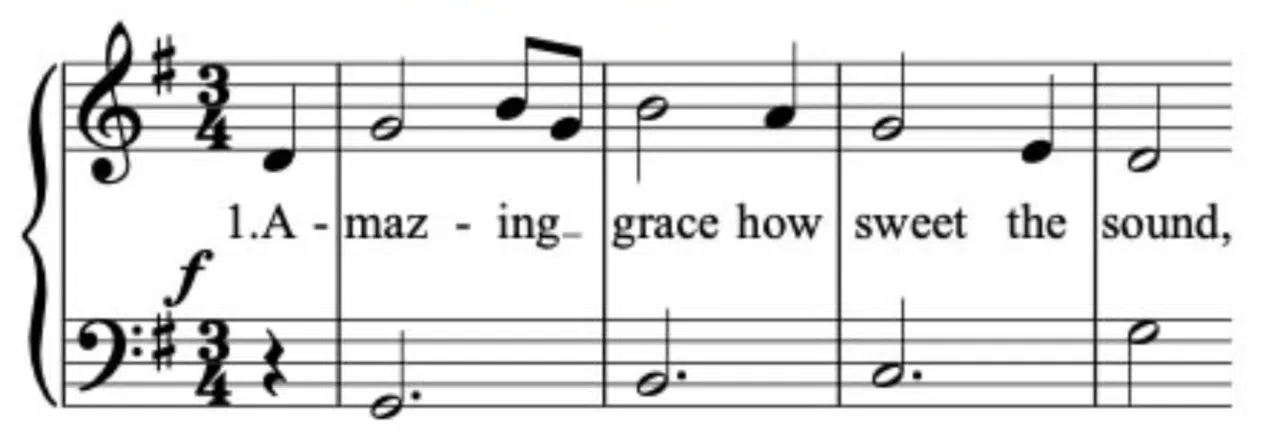
Diatonic harmonies are formed by using notes within a specific key, while chromatic harmonies use notes from outside the key.
Diatonic harmony is more common in most music genres, like hip hop and pop, but chromatic harmony can add color and interest to your compositions.
For instance, in the key of C major, a diatonic harmony might involve chords like C major (C-E-G) and G major (G-B-D).
A chromatic harmony might incorporate an E flat major (Eb-G-Bb) chord.
-
Modal
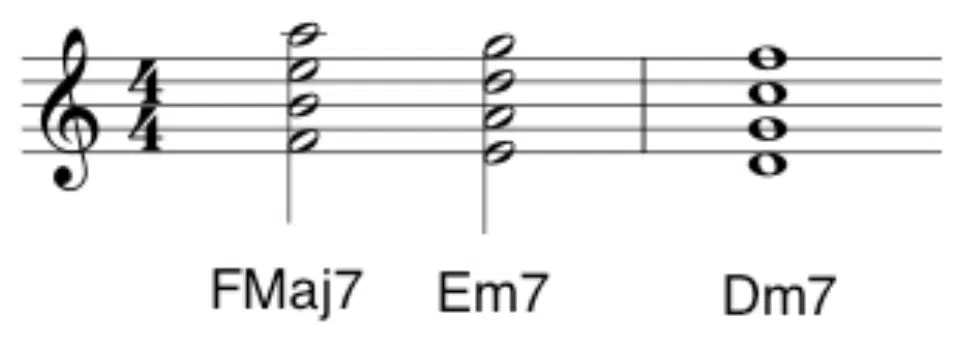
Modal harmony is based on the use of modes, which are scales derived from the diatonic major and minor scales.
In modal harmony, chords, and chord progressions are built using notes from a specific mode, giving the music a distinct character.
For example, Dorian mode (D-E-F-G-A-B-C-D) might be used to create a harmony that has a slightly different feel compared to the traditional major scales or minor scales.
-
Polytonal

Polytonal harmony involves the simultaneous use of multiple keys or tonal centers.
This type of harmony can create a complex composition and intriguing soundscapes that challenge the listener’s ear.
For example, a piece of music might include chords from both the C major (C-E-G) and G minor (G-Bb-D) keys played together.
These are just a few examples of the different types of harmonies you can explore in your music.
Experimenting with various harmonic structures can help you create a unique and captivating composition that resonates with your listeners.
Chord Structures
In addition to different types of harmonies, it’s important to understand the various types of chords that can be used to create harmonic progressions.
Let’s take a closer look at some common chord structures:
-
Triads
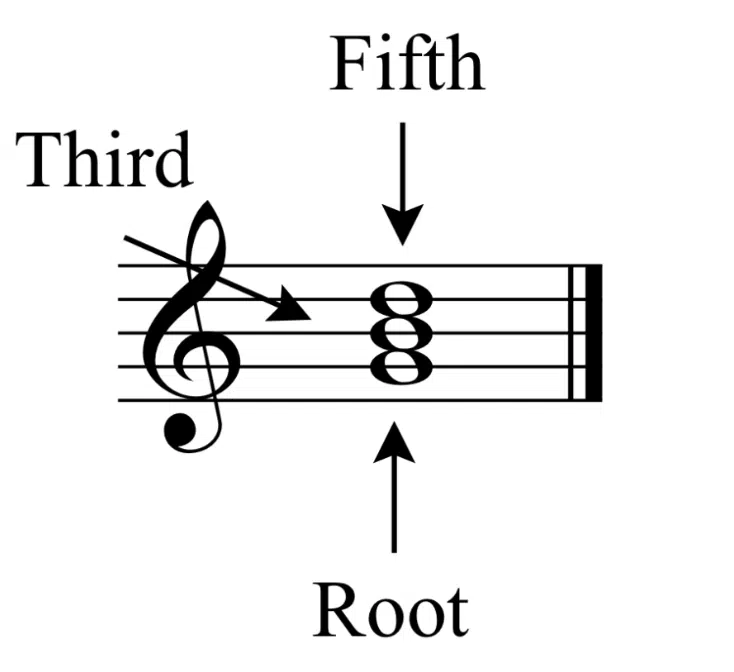
A triad is a three-note chord consisting of:
- A root
- A third
- A fifth
Triads are the most basic type of chord and can be classified as major, minor, diminished, or augmented, depending on the intervals between the notes.
For example, a C major triad is made up of the notes C-E-G, while a C minor triad consists of C-Eb-G.
-
Seventh Chords

Seventh chords are four-note chords that include:
- A root
- A third
- A fifth
- A seventh
These chords add an additional layer of complexity and can be classified as major seventh, minor seventh, dominant seventh, and more.
For example, a C major seventh chord consists of the notes C-E-G-B, while a C dominant seventh chord is made up of C-E-G-Bb.
-
Extended Chords

Extended chord progressions are chords that include notes beyond the basic triad or seventh chord structure.
These chords can add even more depth and complexity to your harmonic progressions.
Common extended chords include the ninth, eleventh, and thirteenth chords.
For example, a C major ninth chord consists of the notes C-E-G-B-D, while a C dominant thirteenth chord is made up of C-E-G-Bb-D-F-A.
By understanding and experimenting with these different chord structures, you can create a wide variety of harmonic progressions that add richness and interest to your compositions.
The Art of Combining Musical Notes
Now that we have a solid understanding of the different types of harmonies and chord progressions, let’s explore some techniques for combining musical notes to create captivating harmonies.
When creating harmonies, it’s essential to consider how they will interact with the melody.
There are several techniques you can use to create harmonies that complement and enhance your melodies:
Counterpoint

Counterpoint is a technique where two or more independent melodic lines are combined to create harmony.
This approach can create intricate and engaging textures in music.
For example, in a piece of music in C major, you might have a melody that starts with the notes C-D-E, while a counter-melody begins with the notes E-F-G.
When played simultaneously, these two melodies create a harmonic progression that complements and supports each other.
Parallel Harmonies
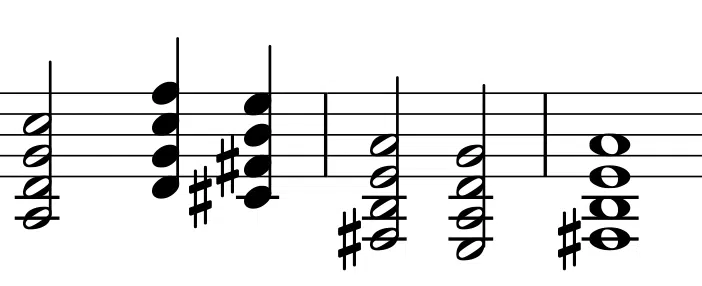
Parallel harmonies occur when two or more melodic lines move in the same direction and maintain a consistent interval between them.
This technique can create a sense of unity and cohesion in your music.
For example, you might have a melody that starts with the notes C-D-E, and a harmony that moves in parallel with the melody, starting with the notes G-A-B.
This creates a consistent interval of a fifth between the melody and harmony.
The Role of Musical Intervals
Understanding musical intervals—the distance between two notes—is crucial when creating harmonies.
Different intervals can evoke different emotions and create specific harmonic effects.
Octaves
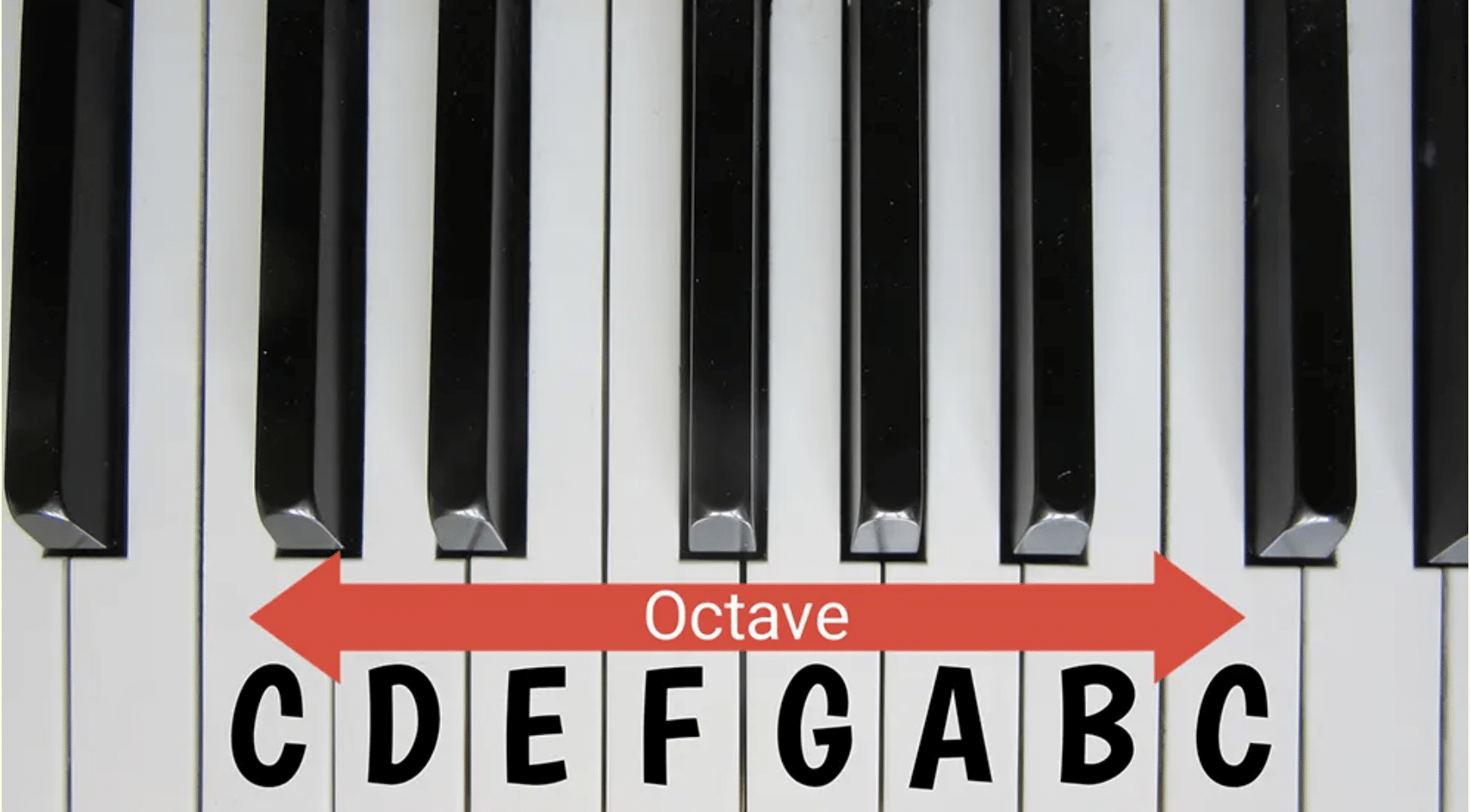
An octave is an interval of twelve semitones or eight diatonic scale degrees between two notes.
Octaves are a powerful tool for reinforcing a melody, as they add depth and fullness to the sound without introducing additional harmonic complexity.
For example, doubling a melody an octave higher or lower can make it stand out and feel more robust.
Major and Minor Thirds

Major and minor thirds are intervals of four and three semitones, respectively.
These intervals are the building blocks of major and minor chords, and they create a sense of warmth and emotional depth in harmony.
Combining major and minor thirds in your harmonies can help you shape the emotional character of your songs.
If you’re wondering how to write a song, from start to finish, we’ve got you covered.
Harmonies in Music Production: Creating A Pleasing Arrangement
As a music producer, incorporating harmonies can make your pieces more engaging, dynamic, and professional-sounding.
Let’s explore some expert tips on how to effectively use harmonies in your productions so you’ll never be stale, boring, or predictable.
Layering and Voicing
The way you layer and voice your harmonies can significantly impact the overall sound of your production. Here are some expert tips on layering and voicing:
- Spread The Voices 一 Spreading the voices of your harmonies across different octaves can create a sense of depth and space in your mix.
- Inversions 一 Using chord inversions, or changing the order of the notes within a chord, can create smoother voice leading and a more balanced mix.
- Doubling Primary Notes 一 Doubling primary notes, such as the root or the melody, can help emphasize specific elements of your harmony and make them stand out in the mix.
- Balance Consonance & Dissonance 一 Striking the right balance between consonant and dissonant harmonies can create an engaging and dynamic listening experience. Use dissonance to build tension and consonance to resolve it.
Musical Instruments
The choice of musical instruments for your harmonies can have a significant impact on the overall texture and mood of your music.
1. Contrast 一 Using contrasting instruments, such as a piano and a string section, can add variety and interest to your harmonies form.
2. Complementarity 一 Choose instruments that complement each other and blend well together. For example, a combination of acoustic guitar and piano can create a warm and inviting harmonic texture.
3. Timbre 一 Consider the timbre of the instruments you use for your harmonies. Different instruments have unique tonal qualities that can affect the emotional impact of your harmony.
Automation & Modulation
Using automation and modulation in your music production can bring your harmonies to life by adding movement and expression.
Here are some expert tips on using automation and modulation effectively:
- Volume Automation 一 Automate the volume of your harmony tracks to create a sense of dynamics and movement. For example, gradually increasing the volume of a harmony track can build intensity and anticipation.
- Panning Automation 一 Automate the panning of your harmony tracks to create a sense of space and movement in your mix. This can make your harmonies sound more immersive and engaging.
- Modulation Effects 一 Use modulation effects, such as chorus, phaser, or flanger, to add depth and character to your harmonies. Be subtle with these effects, as overuse can make your mix sound muddy or unclear.
Recording & Editing
Recording and editing harmonies can be a challenging process, but with the right techniques and approach, you can achieve professional-sounding results.
-
Record Multiple Takes
Record multiple takes of your harmony parts to ensure you have the best possible performance for your mix.
This will give you more options when editing and allow you to choose the best sections from each take.
-
Use Comping
Comping, or compiling the best sections from multiple takes, can help you create a polished and professional-sounding harmony track.
Be patient and take your time when comping to ensure you get the best possible result.
-
Tune and Align
Use pitch correction software and time-alignment tools to ensure your harmony tracks are in tune and in time with the rest of your mix.
This can make your harmonies sound more polished and professional.
Mixing Harmonies
Mixing harmonies is an essential aspect of music production that ensures your harmonies blend well with the rest of your mix.
Let’s check out some different techniques by which you can achieve a fluid mix:
-
EQ and Balance
Use EQ to carve out space for each harmony part in the mix, ensuring that each voice can be heard clearly without clashing with other elements.
Be mindful of the balance between the harmony parts and the main melody or lead vocal, so the harmonies don’t overpower or detract from the primary focus.
For a list of the best EQ plugins in the game, look no further.
-
Reverb and Space
Use reverb to create a sense of space and depth in your mix.
Different reverbs can create different moods and textures, so experiment with various settings to find the one that best suits your harmony parts.
Be careful not to use too much reverb, as it can make your mix sound muddy and unfocused.
For a list of the best reverb plugins, we’ve got you covered on that end too.
-
Stereo Imaging
Use stereo imaging tools to create a sense of width and space in your mix.
Panning harmony parts in the stereo field can help them blend well with the rest of the mix and make your harmonies sound more immersive.
-
Compression
Use compression to control the dynamics of your harmony tracks and help them sit well in the mix.
Be subtle with compression, as over-compression can make your harmonies sound lifeless and unnatural, with all due respect.
To spice it up a little bit, here’s how to master the art of parallel compression as well.
Harmony: Final Thoughts
As we’ve journeyed through the world of harmony in music, it’s clear that understanding and mastering this essential aspect of music production can elevate your compositions.
It can make your tracks more engaging, emotionally rich, and captivating.
As you continue your musical journey, remember that experimenting and pushing your creative boundaries are the keys to growth and progress.
If you’re looking for a shortcut to spark your creativity and make your workflow more efficient, check out the Unison MIDI Chord Pack.
This versatile and comprehensive pack offers a vast array of pre-made chords and progressions that can inspire new epic ideas.
As well as help you break through writer’s block, and save time when crafting your next masterpiece (which we all know is precious).
Don’t be afraid to explore new harmonic territories, challenge conventional wisdom, and most importantly, have fun in the process.
Until next time…






